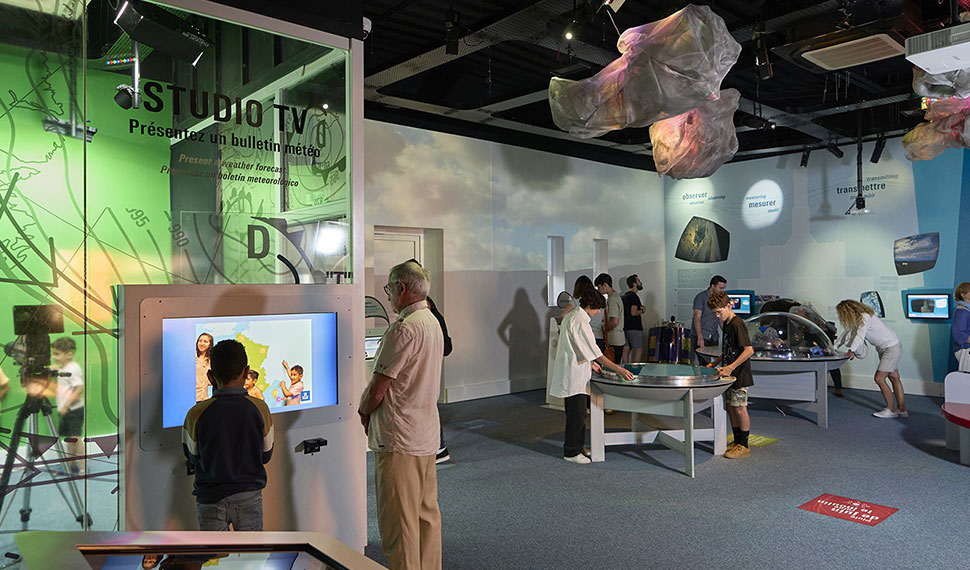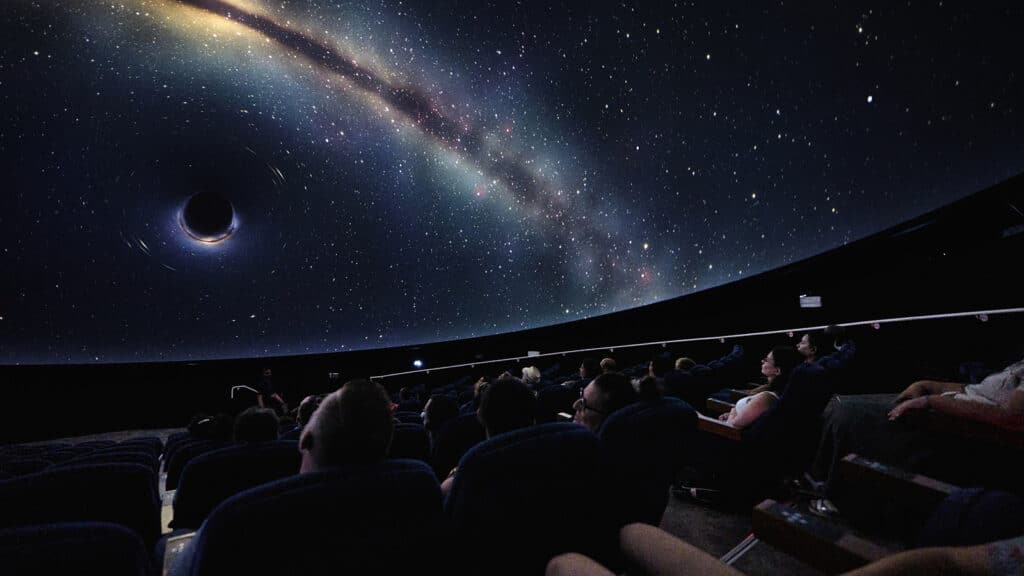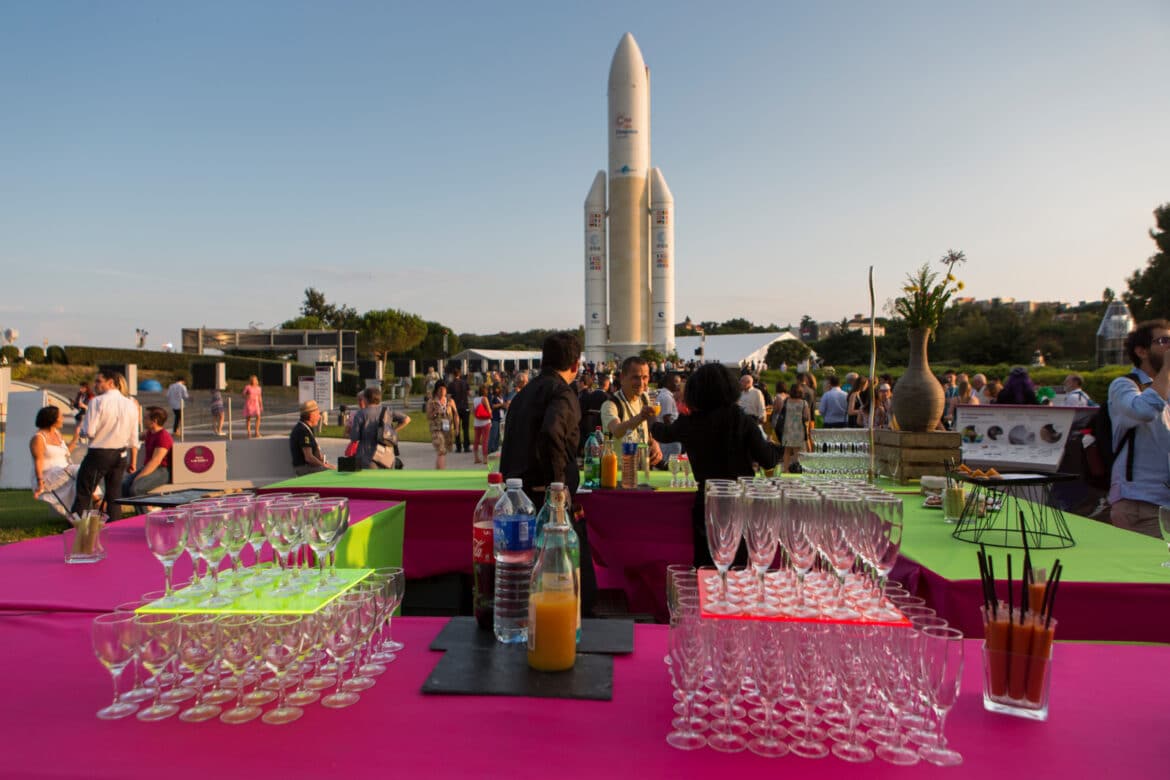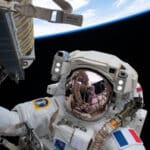Share
NAUKA DOCKS WITH THE ISS
Published on 12 October 2021
The Russian module Nauka successfully docked with the ISS on 29 July. With a mass of 22 tons, for a length of 13 m and a diameter of 4.3 m, it is mainly dedicated to science.

Nauka‘s history is strewn with setbacks, delays and suspense! Also known as MLM for Multi-purpose Laboratory Module, this new Russian element of the International Space Station (ISS), is in fact more than ten years behind schedule, since it was originally scheduled to launch in 2007.
SUSPENSE IN ORBIT
Nauka has inherited Russian know-how as regards space stations. But this module had a complicated development, marked with technical problems. Finally, on 21 July 2021, it took off from Baikonour cosmodrome on top of a Russian Proton launcher (Roscosmos video below).
After the suspense related to its construction, its route to the ISS continued in that vein. Nauka had technical problems after its launch, particularly as regards its propulsion, essential to lift its orbit and therefore to reach the station. From the ground, Russian controllers found a way to get this 22-ton element to dock safely. In the light of this success, the Russian Roscosmos space agency gave the green light to the departure of its cargo vessel, Progress MS-16 on 26 July which took the docking module, Pirs, with it to prepare the required space for Nauka (Roscosmos video below).
Canadarm 2, the Canadian robotic arm, then helped by visually observing the docking area which was thus left vacant and now dedicated to Nauka. On 29 July, Nauka arrived near the ISS, accomplishing the last few metres under the supervision of Oleg Novitskiy.
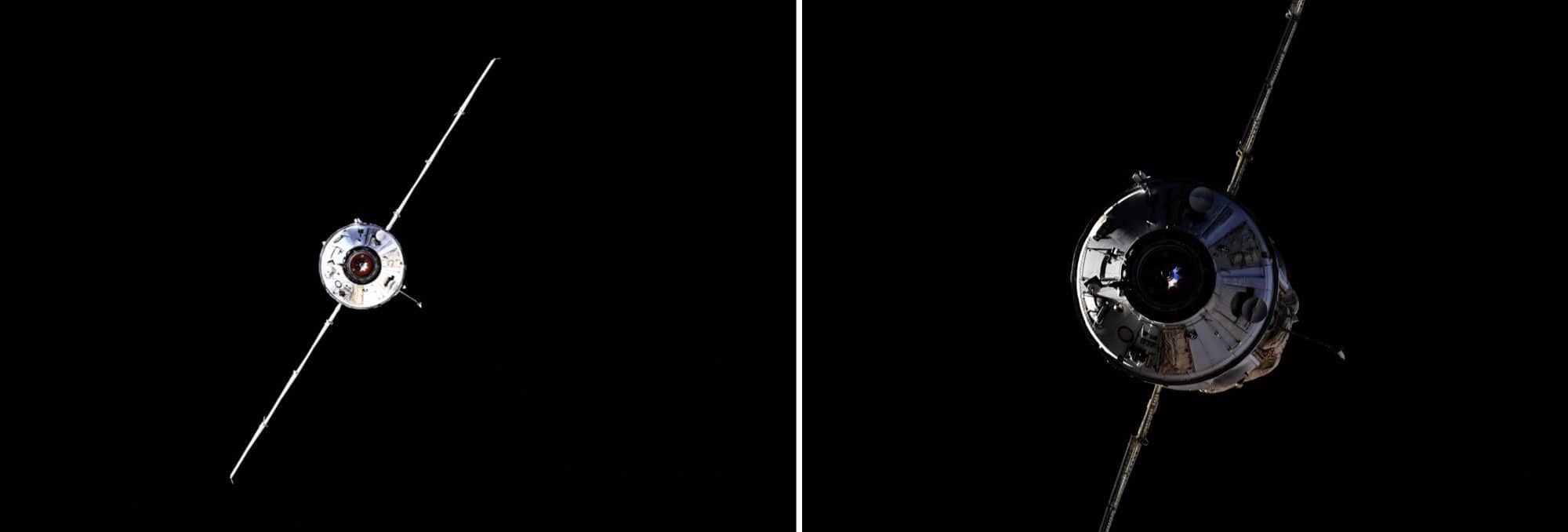
Nauka approaching the ISS. Two photos taken by the Russian Oleg Novitskiy.
Credit: Roscosmos/Oleg Novitskiy
Up there, Oleg Novitskiy (one of Thomas Pesquet’s’ colleagues on Expedition 65) was ready to take over manually if the need arose. Nauka docked at 13.29 Universal Time or 15.29 mainland France time.
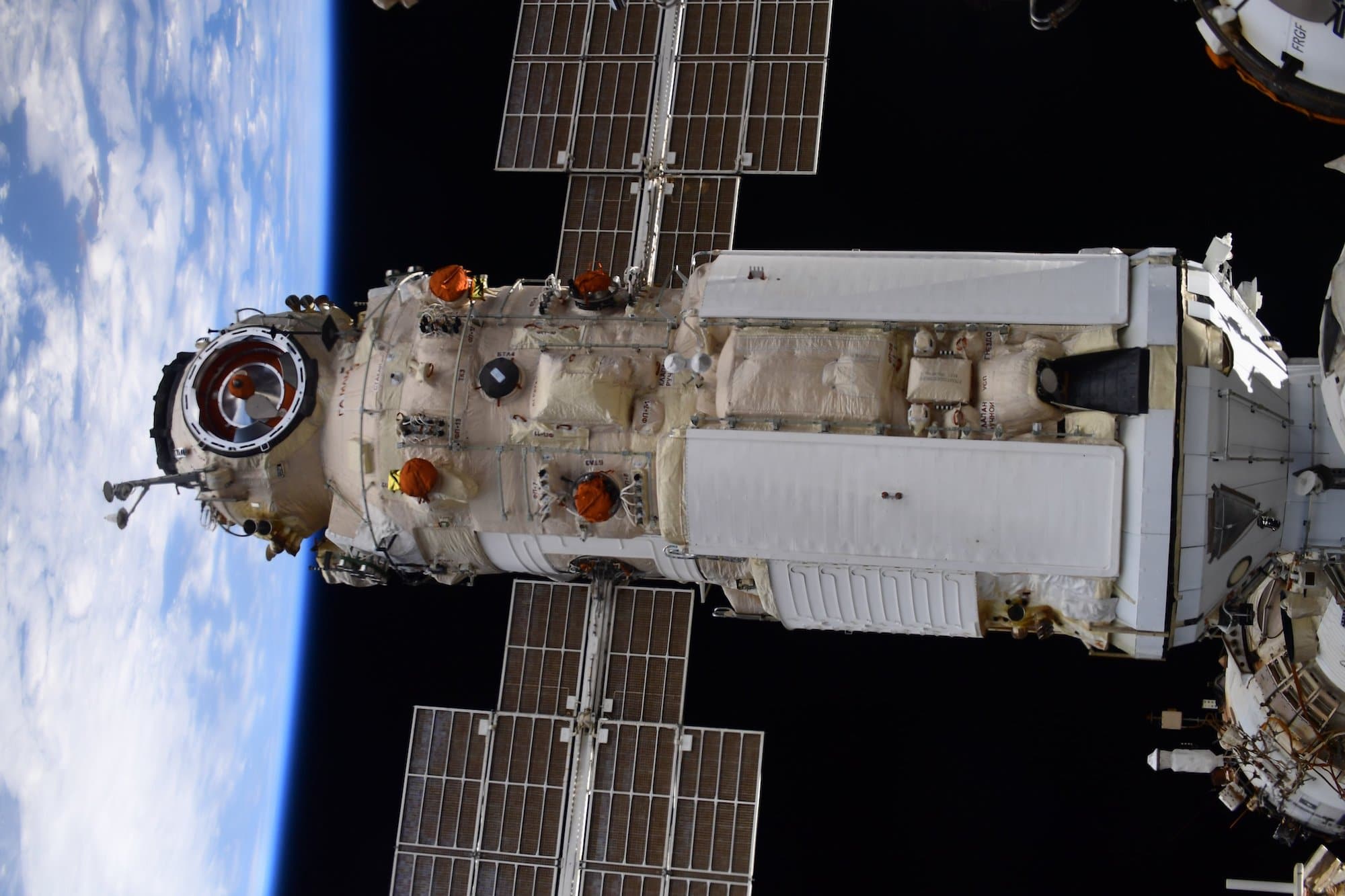
Nauka docked with the ISS. A photo by the American Shane Kimbrough.
Credit : NASA/Shane Kimbrough
In the coming days and weeks, Nauka will go into its operational phase to take on its role as a scientific laboratory and also a docking port for Russian spacecraft.
Update: after docking, Nauka’s thrusters operated unexpectedly. The ISS’s orientation was changed by that. Very fortunately, the malfunction stopped and the station resumed its normal position. “The crew was never in danger,” NASA commented. The Russian control centre near Moscow will ensure that Nauka’s thrusters can no longer operate in that way. NASA Press Release.
ERA: A EUROPEAN ROBOTIC ARM
Nauka carried with it a European “passenger.” Positioned on the outside, it is a robotic arm named ERA for European Robotic Arm. This facility was designed and supplied by the European Space Agency (ESA).
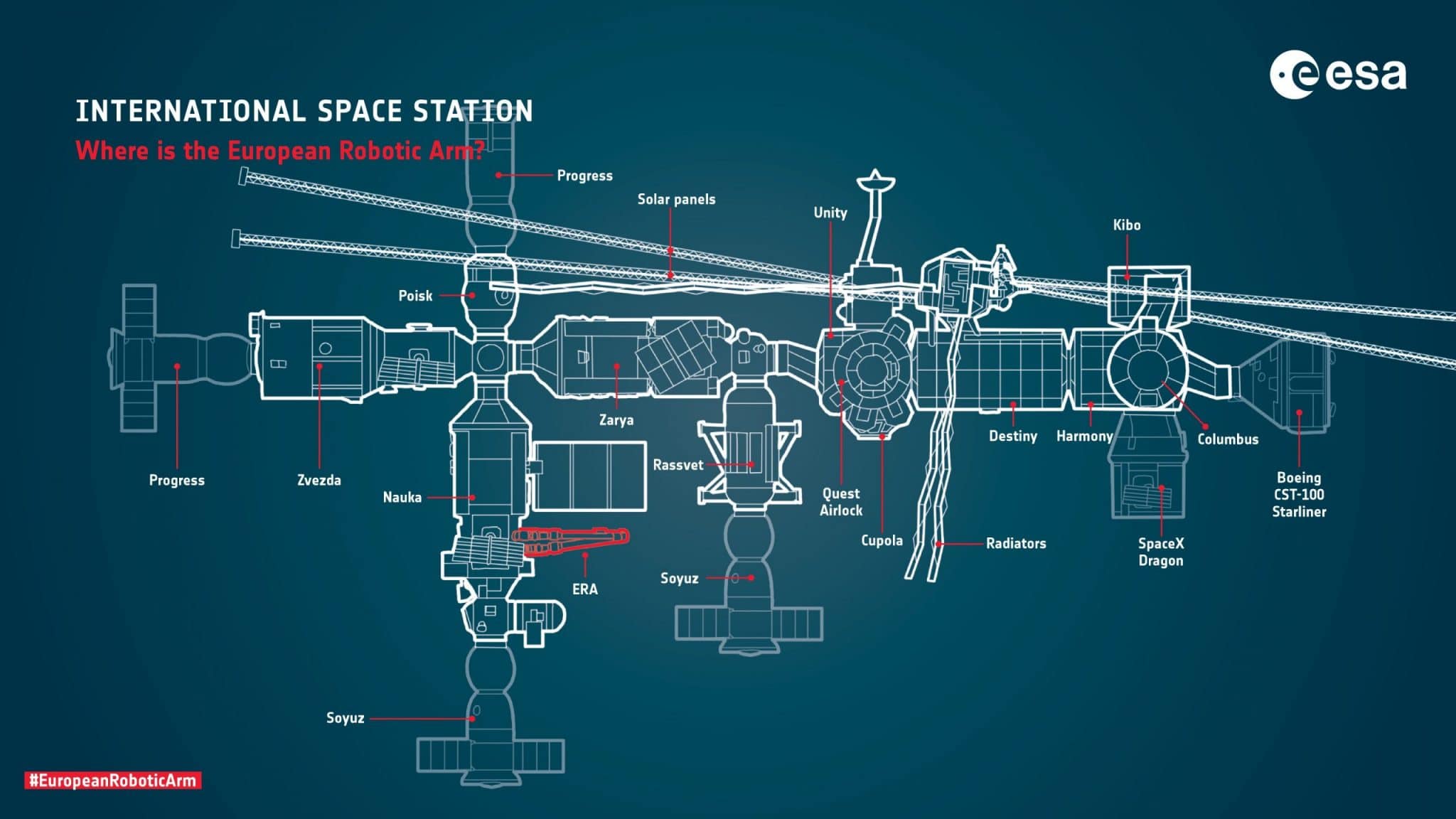
A diagram showing the basic location of the ERA robotic arm on Nauka on the ISS.
Credit : ESA
11 m long, ERA can move to several locations on Nauka’s hull to carry out operations similar to those of its Canadian “colleague” (camera observations, moving payloads, etc.). ERA is controlled from inside the station, as well as from a control station located outside. An astronaut on a spacewalk can therefore use ERA directly, an innovation.
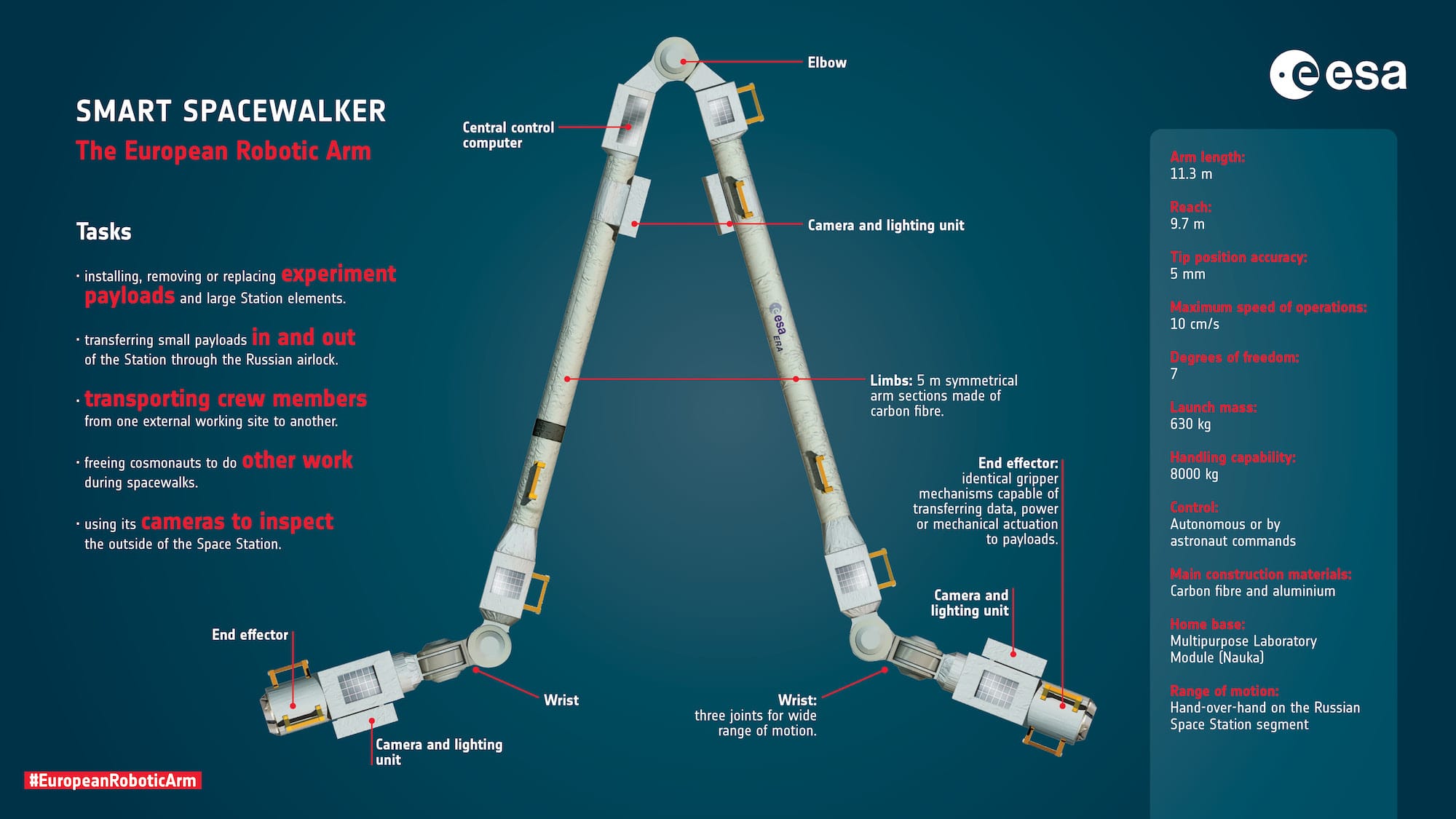
Diagram oh the Europeab robotic arm ERA.
Credit : ESA
